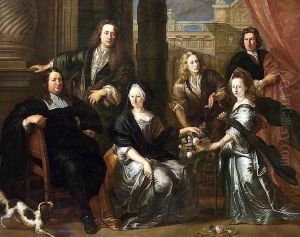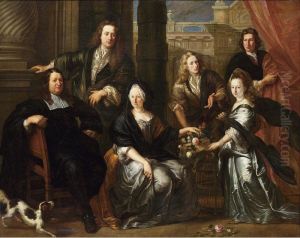Jan Anthonie Coxcie Paintings
Jan Anthonie Coxcie, often referred to as the Flemish Raphael, was a prominent and influential painter of the Renaissance period born in Mechelen, then part of the Habsburg Netherlands. His birth year is generally accepted as 1499. Coxcie was known for his skill in painting, drawing, and tapestry design, and he played a significant role in bringing the Italian Renaissance style to the Low Countries.
Coxcie's early training is not well documented, but it is believed that he initially trained with his father, Michiel Coxcie, who was also a painter. His formative years as an artist were greatly influenced by his stay in Italy, where he traveled sometime after 1530. He spent a considerable amount of time in Rome, studying the works of Italian Renaissance masters such as Michelangelo and Raphael. Coxcie's work was particularly influenced by Raphael, from whom he derived his moniker.
Upon his return to the Low Countries around the 1530s, Coxcie brought with him the Italian Renaissance style, which he successfully integrated with Northern artistic traditions. His contributions helped to foster a new wave of Renaissance art in Northern Europe. He was also a court painter to Emperor Charles V, which afforded him significant prestige and commissions. Among his notable works are the restoration of Hubert and Jan van Eyck's 'Adoration of the Lamb' in Ghent and the creation of numerous altarpieces and religious works that display his mastery of color and detailed composition.
Coxcie married twice and had several children, some of whom also became painters, continuing the family tradition. His influence extended beyond his immediate circle, as he taught and inspired a generation of Flemish artists, helping to shape the course of Northern Renaissance art. Coxcie's death is recorded in 1592, marking the end of an illustrious career that spanned over six decades.

